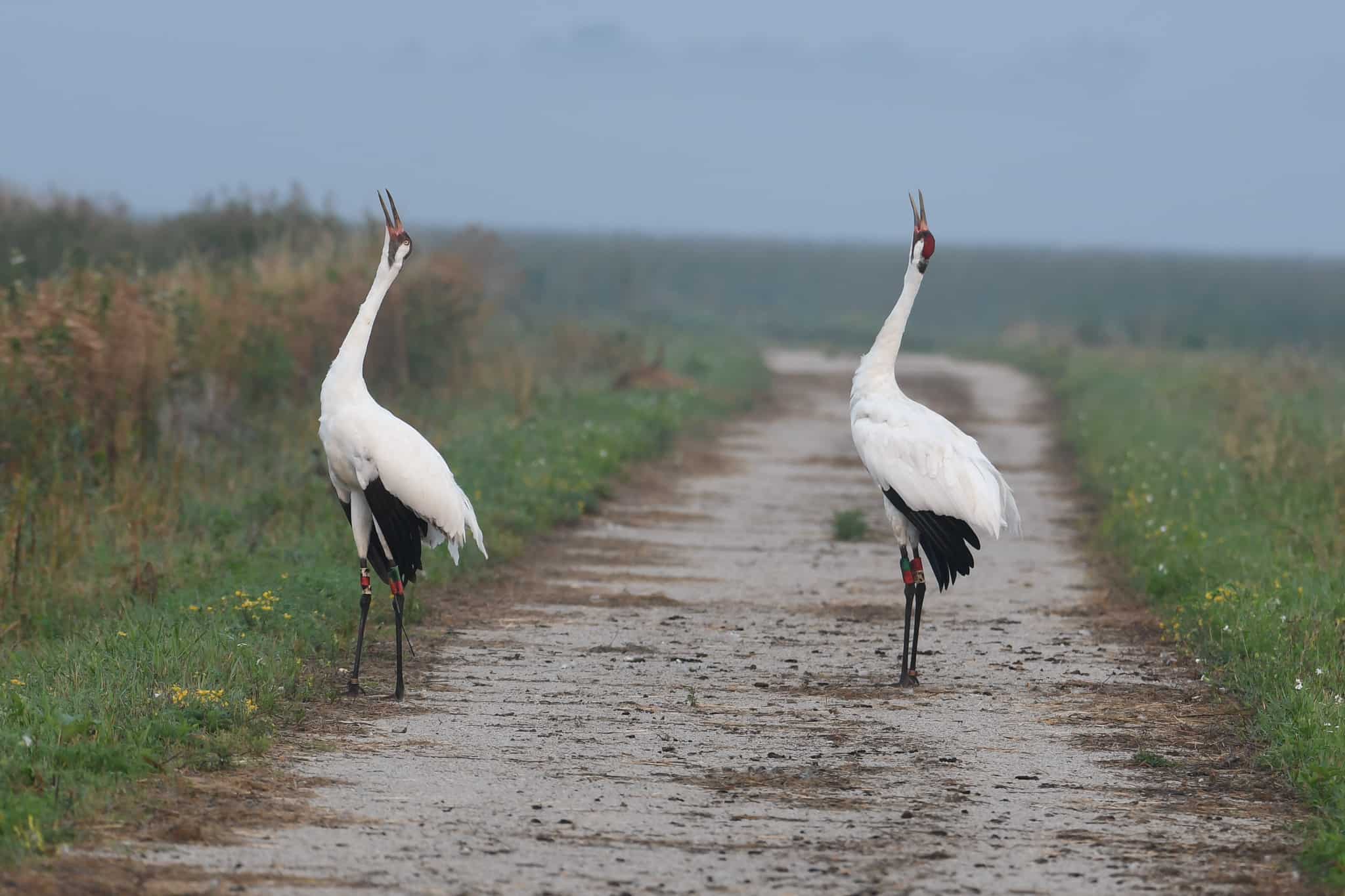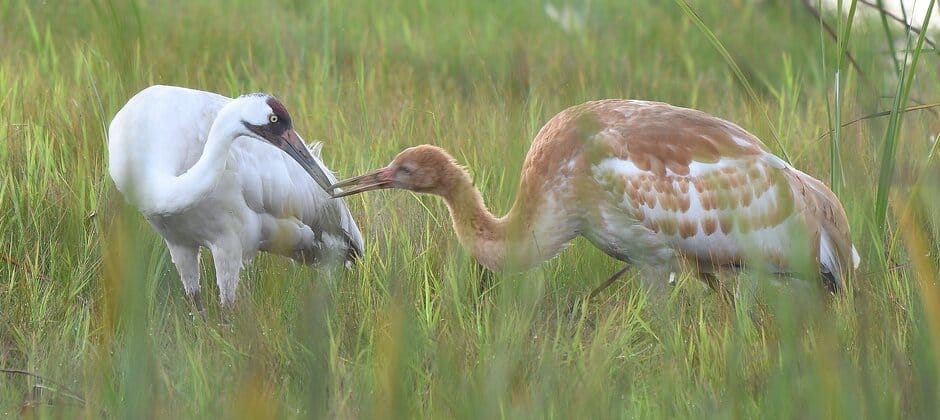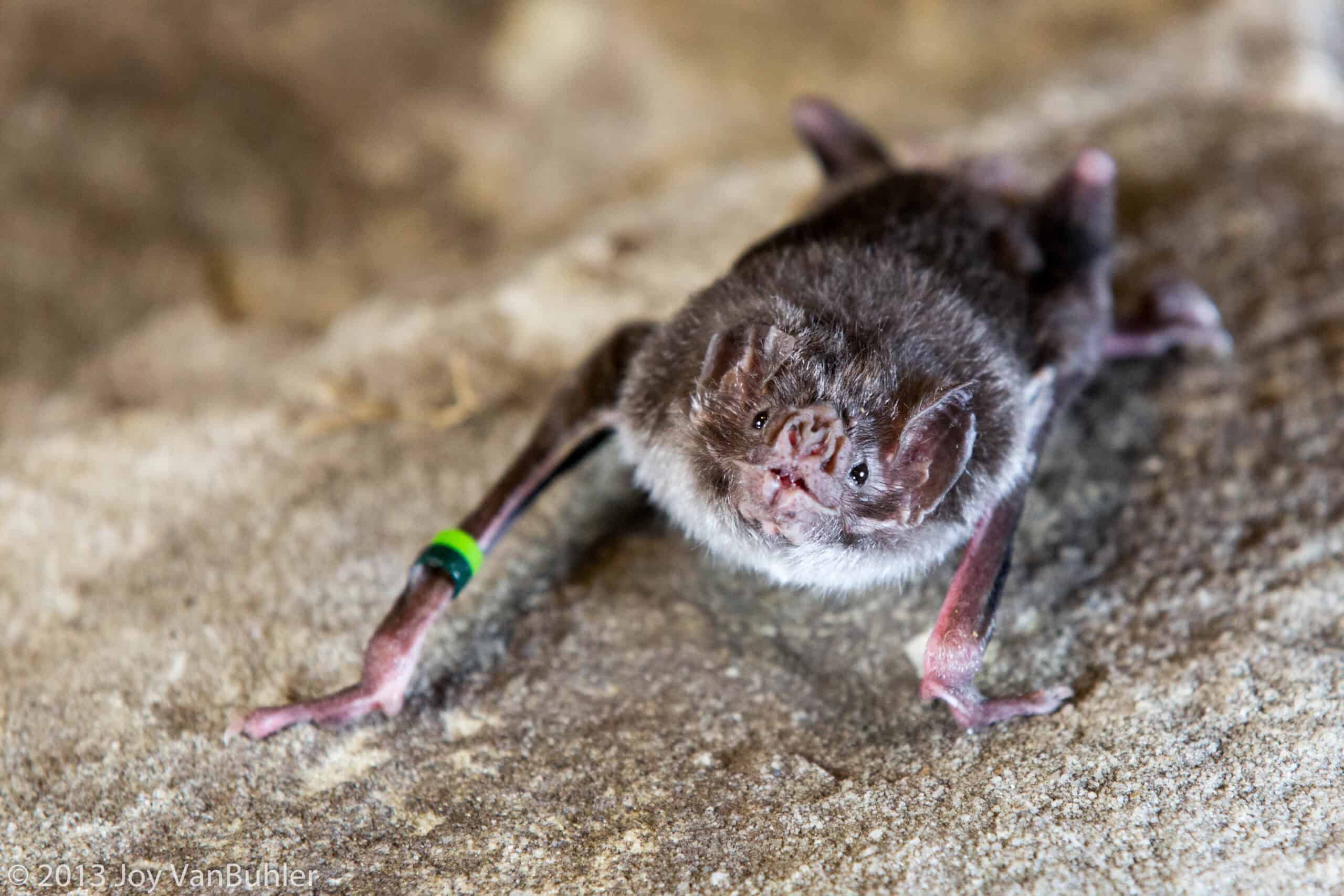Share this article
Reintroduced whooping cranes are dispersing across Wisconsin
Whooping cranes are dispersing far from their reintroduction sites in Wisconsin, suggesting conservation efforts for the endangered birds are paying off.
“We are starting to see the population behaving more like wild birds ought to,” said Hillary Thompson, North American crane analyst at the International Crane Foundation.
Federally endangered whooping cranes (Grus americana) were extirpated for years in the eastern U.S., until wildlife managers reintroduced a population migrating between Wisconsin wetlands and Florida’s Gulf Coast in 2001. Those reintroductions required some innovation. Conservationists flew ultralight aircraft while dressed in crane costumes to guide the first few migrations of the iconic birds.
Since then, researchers have reintroduced up to 29 birds yearly to the eastern population, which now sits at around 80 individuals—a smaller number than the 500 or so that migrate between Wood Buffalo National Park in Canada and Texas every year.
Thompson led a study published recently in Ecology and Evolution in which she and her colleagues counted birds and tracked them with VHF and GPS transmitters.
“The population is very intensely monitored, so we know a lot about each individual,” she said.
The team found that cranes released into some of the new reintroduction sites didn’t always stay there. Instead, they dispersed to core release areas where other whooping cranes already lived or to new areas altogether.
The researchers aren’t sure exactly why the cranes moved—it’s possible some wanted to be closer to existing population. But it’s also possible that the newer released cranes might prefer some habitat features that researchers don’t yet fully understand.
Thompson said that researchers need to learn more about these preferences to understand whether they need to better manage optimal crane habitats.

A pair of whooping cranes performing unison calling, part of a mating ritual. Credit: Doug Pellerin
“We’re learning a lot more about reintroduction and whooping cranes,” Thompson said. While some may criticize the small size of the eastern migratory population of whooping cranes after two decades of reintroduction and conservation work, she noted that the birds are naturally long-lived and slow to reproduce in the wild.
Still, the program has also gone through some challenges. One of the sources of cranes came from a captive breeding facility at the Patuxent Wildlife Research Center in Maryland, but that program was shut down in 2018. The cranes from Patuxent were moved to other facilities around the country, but “typically when you move birds like that it’s kind of stressful for them,” Thompson said.
Nonetheless, things appear to moving along.
“I think we’re definitely making progress and learning more along the way,” she said.
Header Image: An adult whooping crane feeds its offspring—the first chick born in Horicon Marsh, Wisc. since reintroduction. Credit: Doug Pellerin








